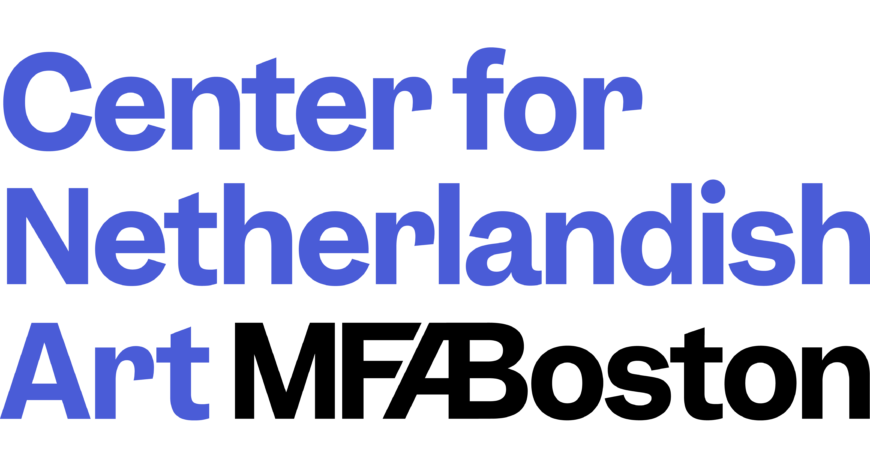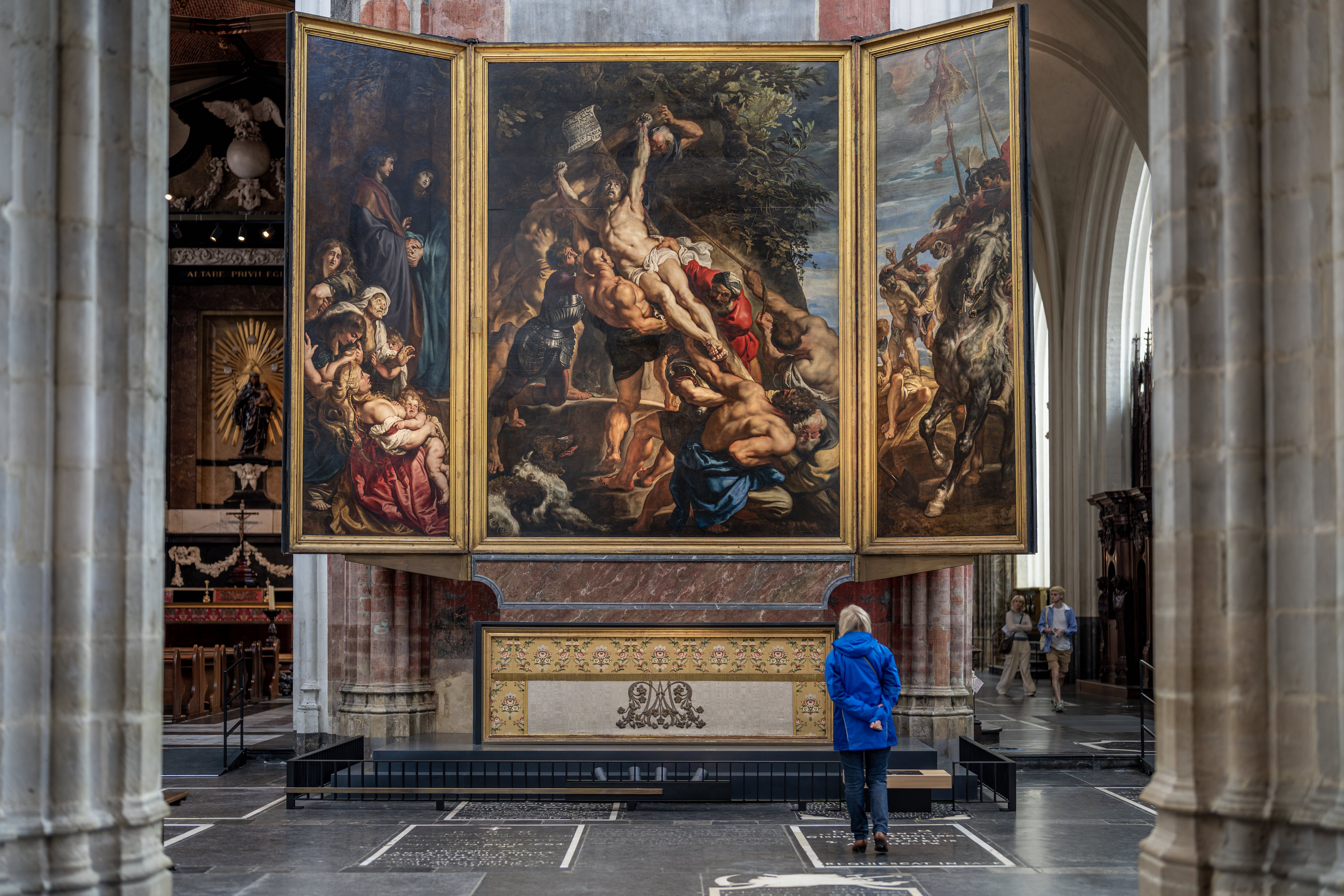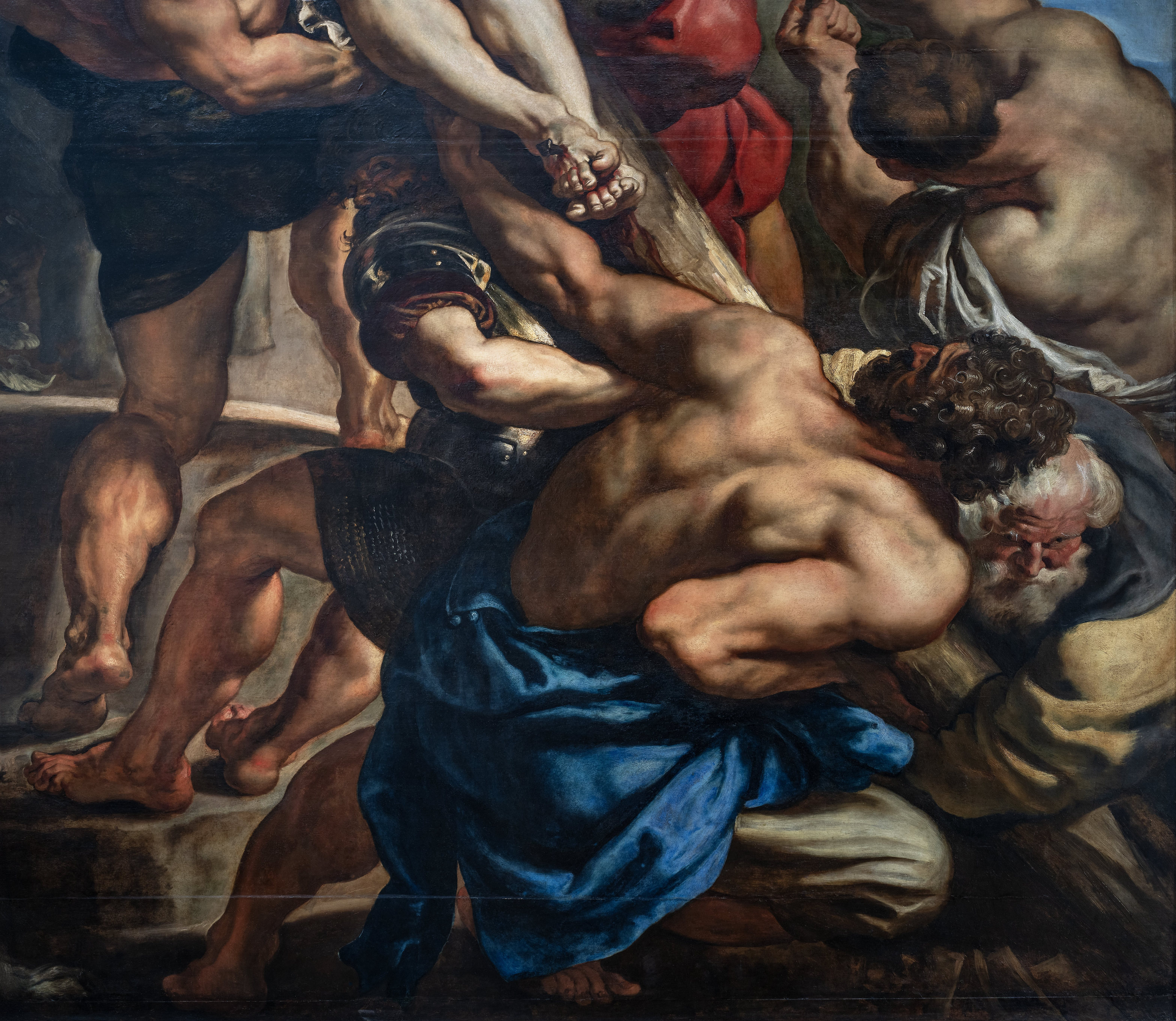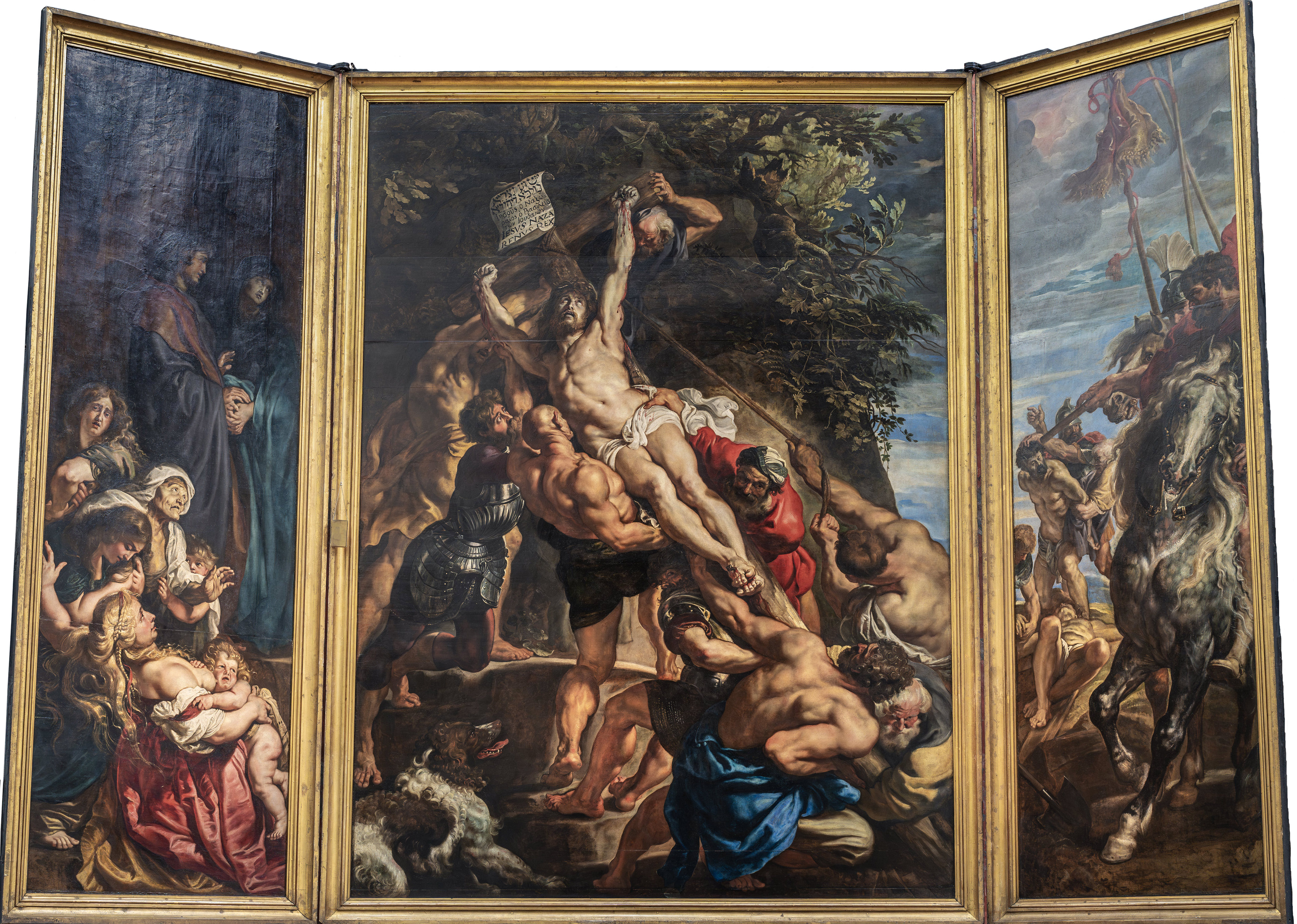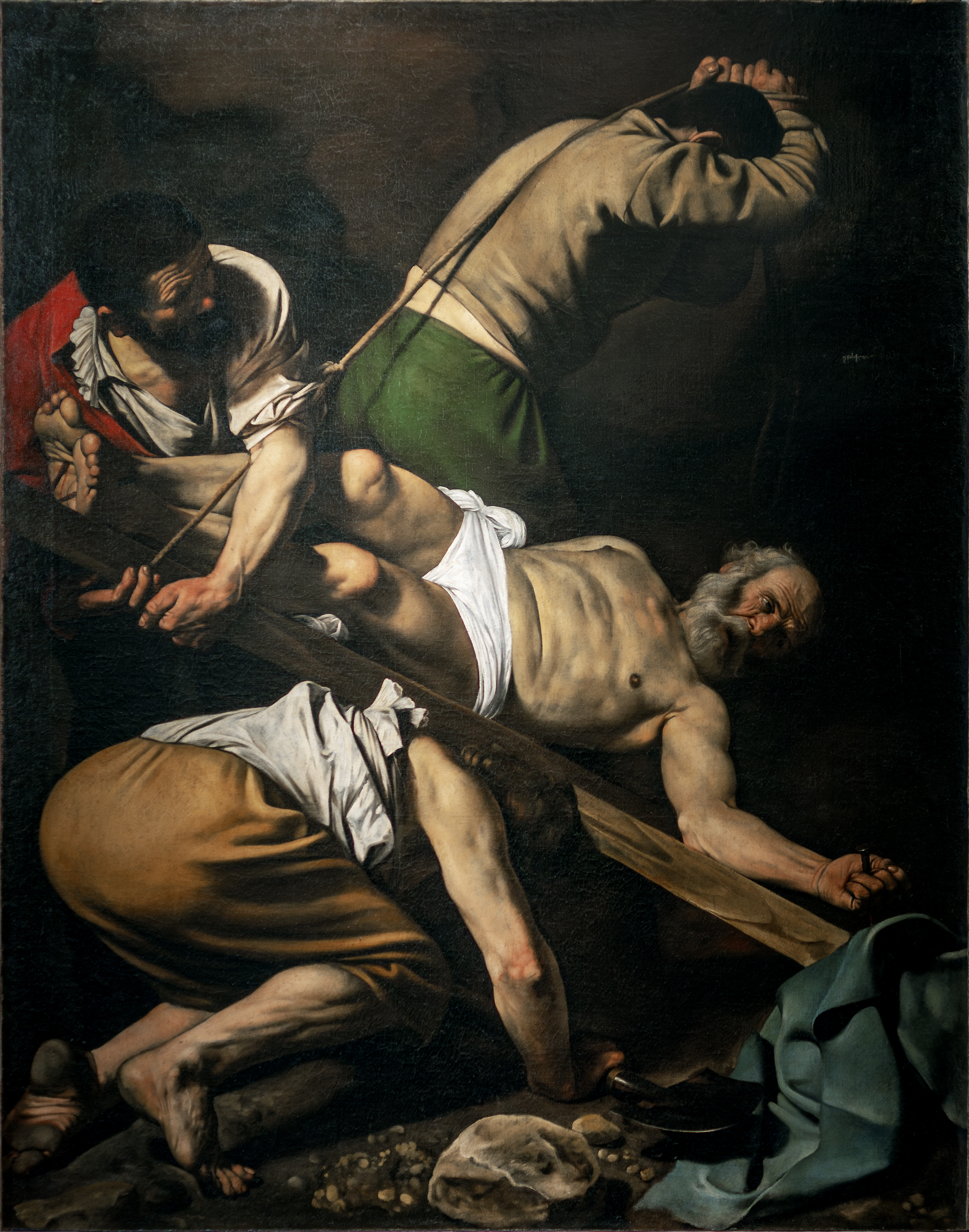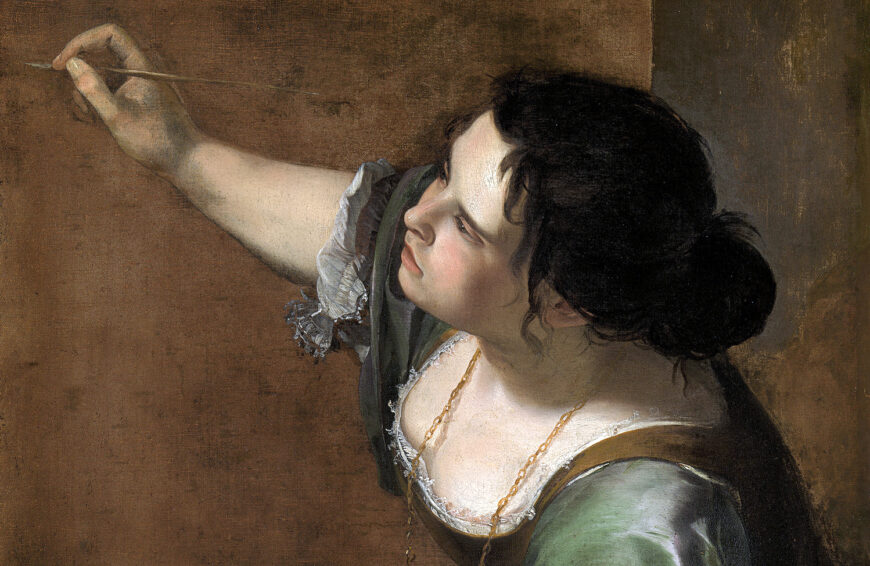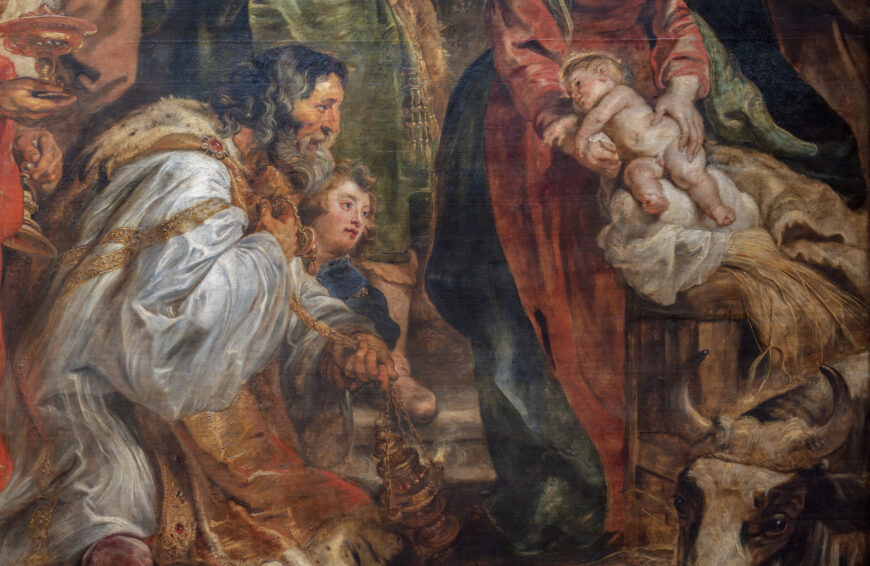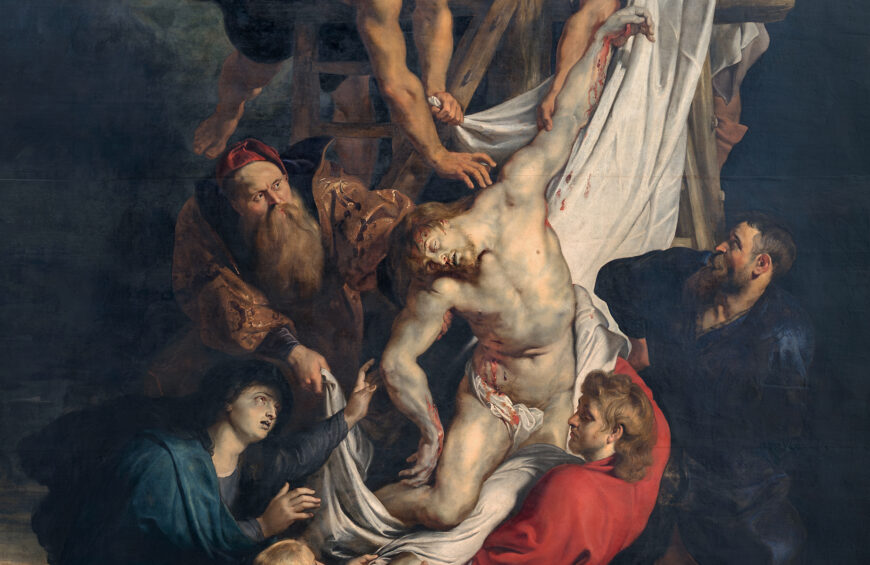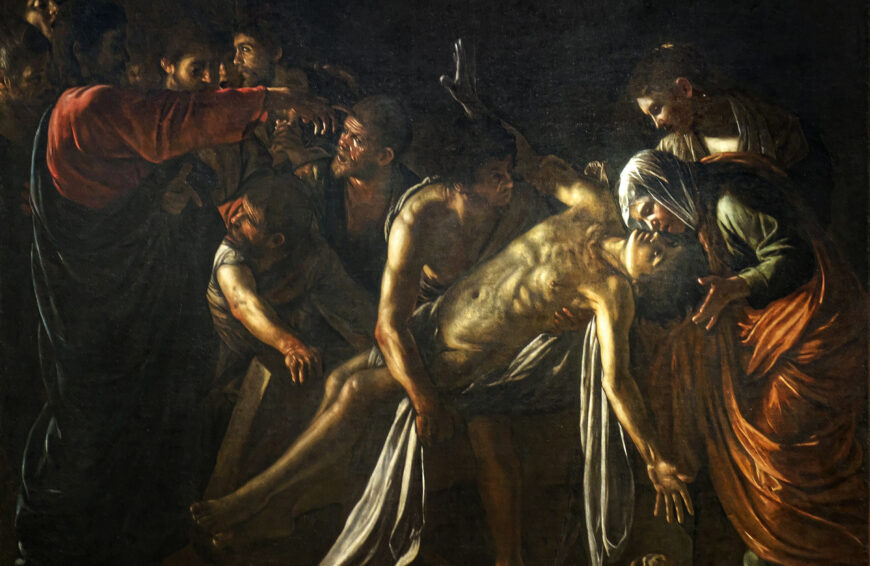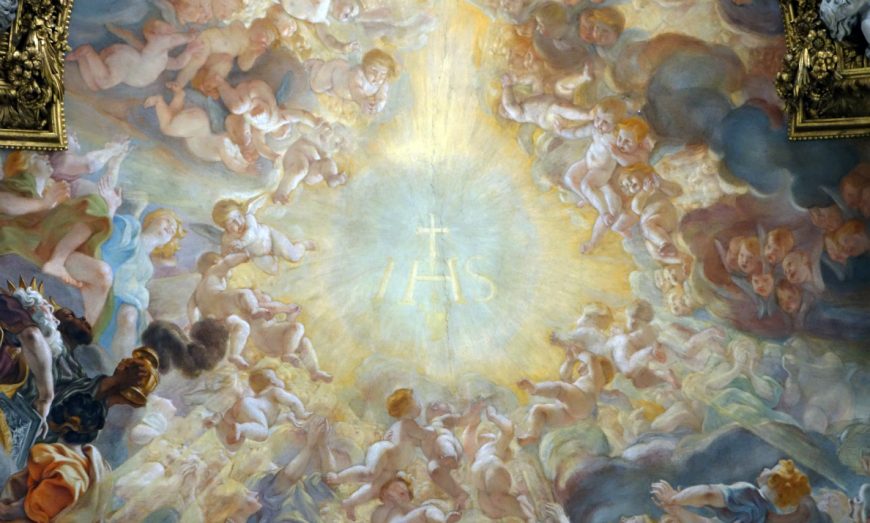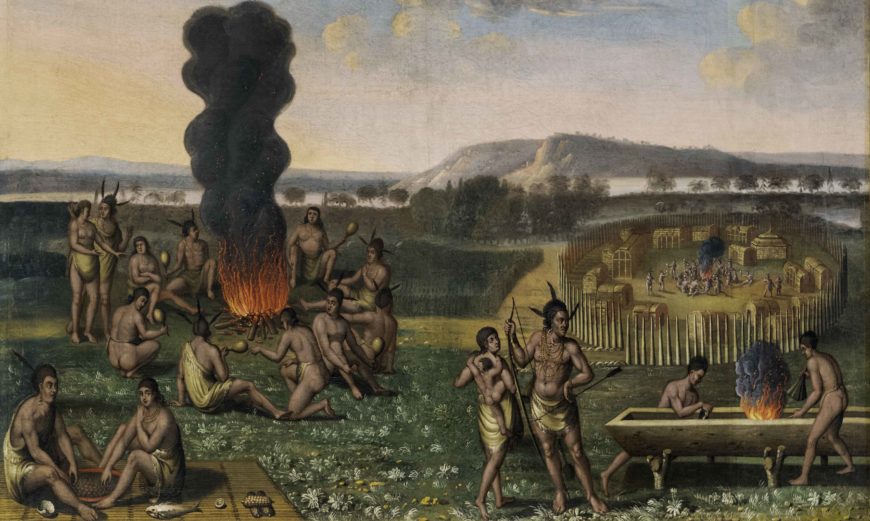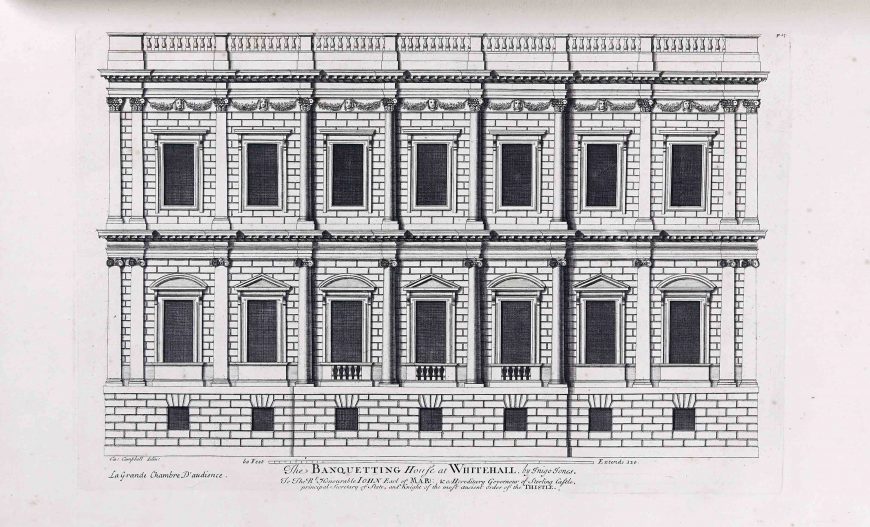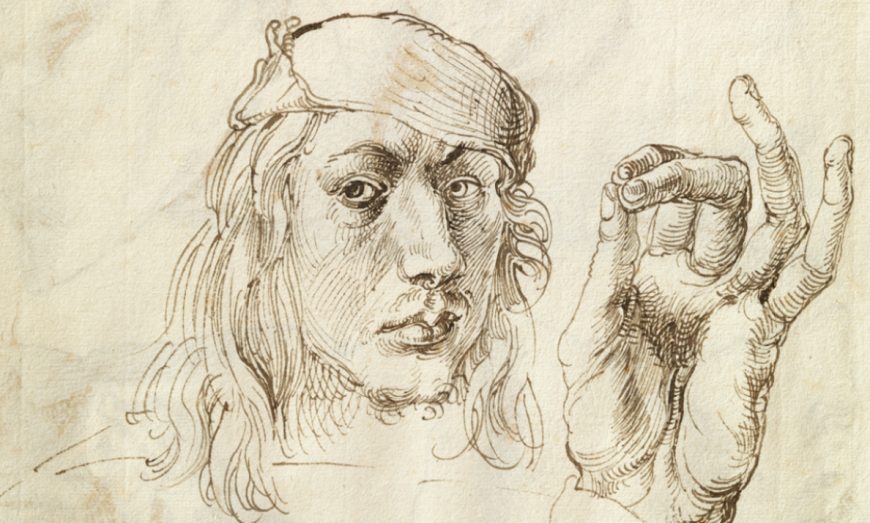Rubens’s enormous altarpiece invites us to take part in the physical and emotional experience of Christ’s elevation.
Peter Paul Rubens, Elevation of the Cross, from the church of Saint Walpurgis (destroyed), 1610, oil on wood, center panel: 460 x 340 cm, wings: 460 x 150 cm (now in the Cathedral of Our Lady, Antwerp). Speakers: Dr. Bert Watteeuw, Director, Rubens House, Antwerp, and Dr. Beth Harris. This video was made possible thanks to the generous support of VISITFLANDERS and the Cathedral of Our Lady, Antwerp
VISITFLANDERS has joined forces with Smarthistory and the Center for Netherlandish Art at the MFA Boston to bring you a series of video conversations with curators on important Flemish paintings by artists such as Jan van Eyck, Hans Memling, Peter Paul Rubens, and James Ensor.
0:00:04.1 Dr. Beth Harris: We’re standing in the Cathedral of Our Lady in Antwerp, looking at an enormous altarpiece by Peter Paul Rubens. While it’s beautiful to see it here in a church environment, we’re also not seeing it in the place that it was originally intended for.
0:00:22.9 Dr. Bert Watteeuw: It was originally intended for the Church of Saint Walpurgis, the church at the heart of the medieval core of Antwerp.
0:00:30.4 Dr. Harris: And it’s a church that dated back to the 8th century.
0:00:33.4 Dr. Watteeuw: It was near the wharf where all the ships arriving in Antwerp would harbor. It was an area of fishermen and boatmen, very lively, densely built, a small chapel had grown by the early 16th century into a really impressive Gothic church. So if you arrived in Antwerp as a sailor and you wanted to thank the Lord for safe passage, that was the first church you were going to step into. As it extended into this dense urban fabric, the new choir had to be built over a street, so 19 steps, and Rubens’s picture was conceived to be placed up in that high choir.
0:01:08.9 Dr. Harris: And at that time it had a predella, three paintings along the bottom, figures along the top, and at the very top, a pelican, which symbolized God’s sacrifice for mankind’s salvation. So you’d walk in and at the far end up those 19 stairs, you would see Rubens’s enormous altarpiece. In a way, it takes a few moments of looking to untangle the bodies of the figures, because Rubens has fused them into this one sort of effort of elevating the cross. And the figure that gets lost for me at first is the figure who’s got his back up against the wood of the cross, using his legs as leverage to help lift the cross.
0:01:54.7 Dr. Watteeuw: You have to run your eyes over it, almost feel the knots of the muscles and the thick calves to make out single bodies cooperating to lift up this heavy body of Christ.
0:02:05.7 Dr. Harris: And if we just look at the body of Christ itself, it’s so beautiful. The knees and the thighs turn one way, the torso turns a different way. So there’s this almost serpentine movement to the figure that is so Michelangelo. I think about Michelangelo’s Slaves, for example.
0:02:26.5 Dr. Watteeuw: Yes, everything is sinuous and attractive to the eye, really, this is a Christ triumphant. He’s looking up at God and has resorted to his faith in the knowledge that this is his destiny.
0:02:37.9 Dr. Harris: In that gable above was an image of God. So Christ is actually looking up at God and acknowledging this destiny. I’d like to think too about the context of Rubens just coming back after having spent eight years in Italy.
0:02:53.5 Dr. Watteeuw: Rubens was trying to establish himself in Rome, but as his mother was gravely ill, he returned to Antwerp. And somehow Rubens often turns out to be the right man at the right time, on the exact right spot. In 1609, the 12-year truce is concluded between the Southern and the Northern Netherlands, money flows into the coffers of Antwerp’s merchants. The Archdukes institute this policy whereby they ask the churches to replace the paintings that were vandalized during iconoclast attacks.
0:03:24.0 Dr. Harris: During the period when Antwerp was under Protestant control, the churches were emptied, images were destroyed. Images were a central difference between the Protestants and the Catholics. They were part of that battle.
0:03:37.1 Dr. Watteeuw: The Reformation had stirred doubts in the Church on the use of images. The Council of Trent had held long discussions on whether they were appropriate, which types of images, and they had weeded out practices that strayed far from what the Bible actually told. But once the issue was settled and the Catholic Church had firmly established that images were essential to the Catholic faith in edifying and converting and in touching people, the flow of images that ensued was so strong and lively, this was a confident Catholicism. You can even look at this and see Rubens sort of pulling up this cross as a sort of defense of imagery and the powers of images in itself.
0:04:20.7 Dr. Harris: We have this very specific context that’s so important for Antwerp, and we also have saints featured that were also important to the city of Antwerp.
0:04:30.6 Dr. Watteeuw: The church was devoted to Saint Walpurgis, also to Saint Amandus, who was important in the early Christianization of Antwerp, and the other wing has Saint Eligius, the patron of smiths, who also had an altar in this very church, and Saint Catherine of Siena. These huge monumental figures, really almost unhuman length to their bodies, but also very solid and dressed in these glittering robes, so even when the altarpiece was closed, it would have made a huge impression, even seen from afar. Rubens was really someone who was aware of how to create drama and suck people into his world.
0:05:07.4 Dr. Harris: So as you looked down the nave, it was almost as if you were watching the cross itself being raised right in front of you.
0:05:15.5 Dr. Watteeuw: So if you imagine this huge painting up in the choir, you have the altar beneath it. And every time the priest would raise the host, the body of Christ, he would, and everyone in the church would devotionally at least participate in the elevation of the cross and in the lifting of Christ’s body. So Rubens invites us to almost take part in this fundamental drama of Christianity, and he displays a catalog of human emotions, from the dignified mourning of Mary and John, to the cruelty of the Roman officers on Christ’s left side, to the intense emotions of the women on the right, to the crudeness of these muscular bodies of the men pulling up the cross in what seems almost bestial force. You know, nine men to pull up that single body. You can really feel the weight of the moment.
0:06:02.2 Dr. Harris: I’m always struck by the way in which the cross is being raised into our space, and all of the figures are so close to us, these muscular figures spilling out into our space.
0:06:14.6 Dr. Watteeuw: His use of the rather traditional format of a triptych is innovative as well, because he fills it in as if the action takes place in a single continuous space.
0:06:24.4 Dr. Harris: Often historically in a triptych, these three panels would appear entirely separate. But here Rubens is in a way, expanding the scene of the elevation.
0:06:34.8 Dr. Watteeuw: He marries at the end of 1609 with Isabella Brant, and in 1610, he buys a large plot of land with a 16th-century house on it, which he’s going to expand into a workshop. And in that exact year, 1610, we find him in an inn near Saint Walpurgis’ Church with Cornelis van der Geest, a fabulously wealthy merchant and supporter of Saint Walpurgis’ Church, with the wardens of the church and the priest, they discuss the commission of this altarpiece. The priest and the wardens had been doing the rounds, collecting money from the parishioners, raising funds, but it’s mainly Cornelis van der Geest who would remain a life-long friend of Rubens’s, who would make sure the job was financed. So this commission really was his first big splash in Antwerp. He’d had other commissions, but this was the high altar of the central church in the historic core of the city. Once this was up there, it was quite clear that Rubens was the man. This is made for the lovers of art, for the joy in painting, really, and I think that’s one of Rubens’s strong points if you get to know him. Everything is infused with this pleasure in painting with his pleasure in images, he says that his job is a dolcissima professione, and you can sense it. It’s like a sweet profession to be a painter.
The Elevation of the Cross altarpiece is a masterpiece of Baroque painting by the Flemish painter Peter Paul Rubens. The work was originally installed on the high altar of the Church of St. Walburga in Antwerp (since destroyed), and is now located in the Cathedral of Our Lady in Antwerp.
Baroque dynamism
Rubens was one of the most prolific and sought after painters of the Baroque period, generally (although not always) defined in painting and sculpture by the representation of action and emotion in ways meant to inspire the Catholic faithful (this triptych was painted less than a century after Martin Luther’s challenge to the authority of the Catholic Church).
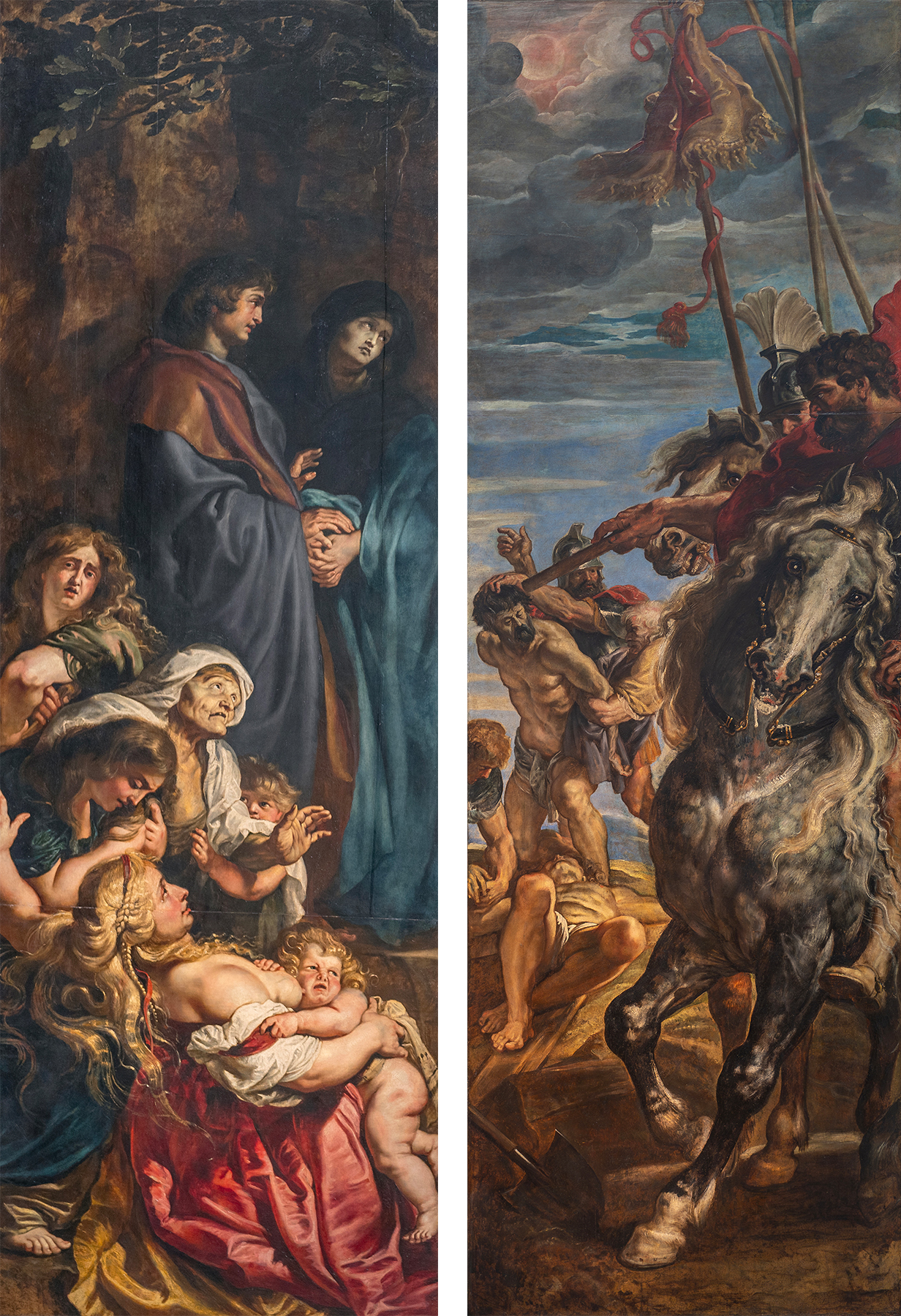
Side panels, Peter Paul Rubens, Elevation of the Cross, 1610, oil on wood, center panel: 15 feet 1-7/8 inches x 11 feet 1-1/2 inches (from Church of St. Walburga, Antwerp, now Cathedral of Our Lady, Antwerp; photo (left): Steven Zucker, CC BY-NC-SA 2.0; photo (right) Steven Zucker, CC BY-NC-SA 2.0)
A unified narrative and biblical accuracy
Rubens and a reflection of Italy
The Elevation of the Cross altarpiece was the first commission Rubens received after returning to Antwerp from his Italian sojourn from 1600 to 1608/9 where he worked in the cities of Mantua, Genoa, and Rome.
Given his extended time in Italy, it is not surprising that we see a number of Italian influences in this work. The richness of the coloration (notice the blues and reds throughout the composition) and Rubens’ painterly technique recalls that of the Venetian master Titian, while the dramatic contrasts of light and dark bring to mind Caravaggio’s tenebrism (darkness) in his Roman compositions, such as the Crucifixion of St. Peter. And indeed, we can clearly see Rubens’ interest in his Italian counterpart in the sense of physical exertion, the use of foreshortening—where figures push past the boundaries of the picture plane into the space of the viewer, and in the use of the diagonal.
In terms of the muscularity and physicality of Ruben’s male figures, a clear connection can be drawn to Michelangelo’s nude males (the ignudi) on the Sistine Chapel ceiling. In addition to looking at the works of past and contemporary masters, we know Rubens was also interested in the study of classical antiquity (ancient Greece and Rome). In fact, the figure of Christ seems to have been based on one of the most famous works of antiquity, the Laocoön, which Rubens made drawings of during his time in Rome.
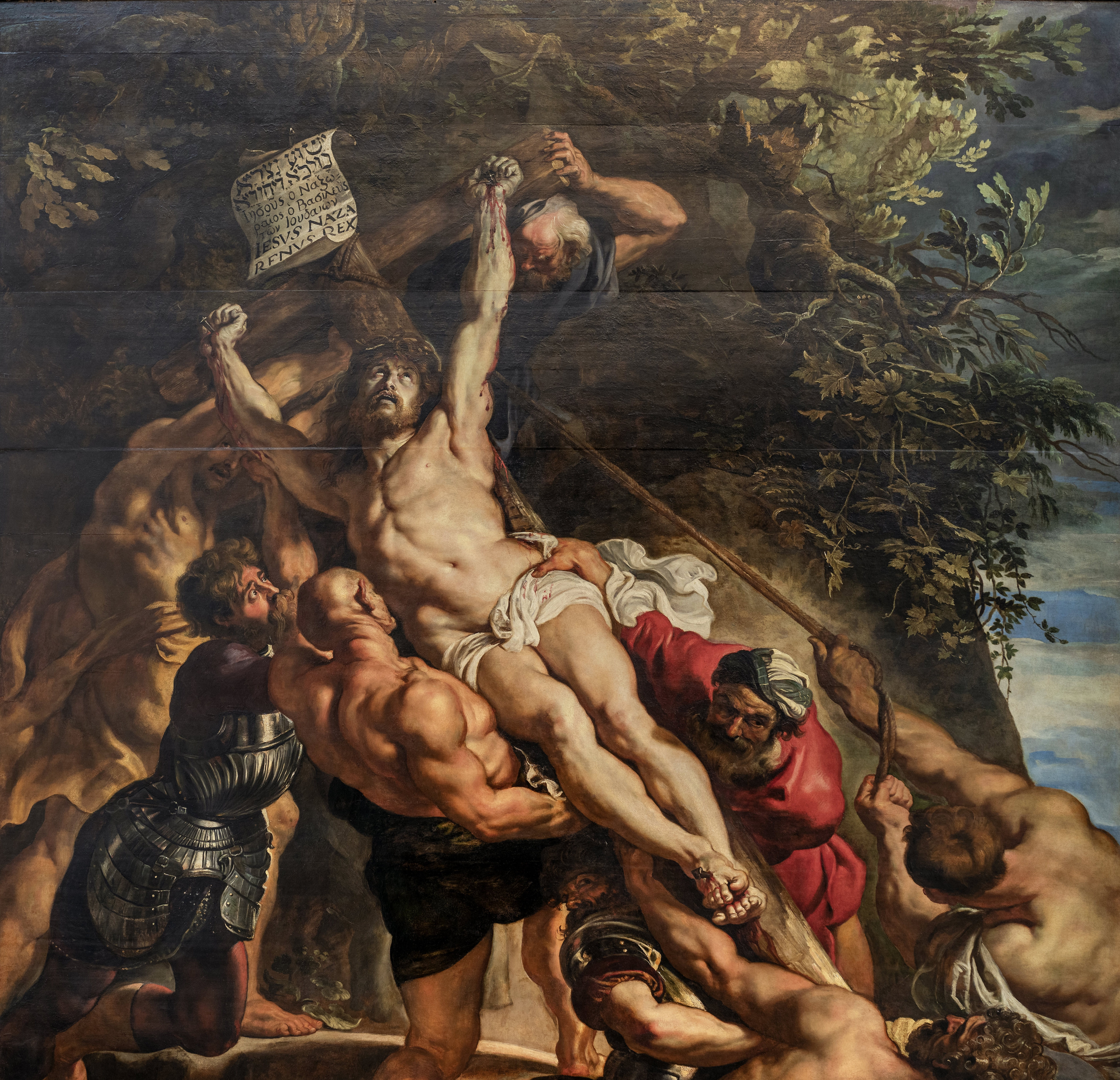
Peter Paul Rubens, Elevation of the Cross, 1610, oil on wood, center panel: 15 feet 1-7/8 inches x 11 feet 1-1/2 inches (from Church of St. Walburga, Antwerp, now Cathedral of Our Lady, Antwerp; photo: Steven Zucker, CC BY-NC-SA 2.0)
Elevation: altarpiece and high altar
When the Elevation of the Cross altarpiece was placed on the high altar, there was a specific connection being forged between the subject of the painting and the function of the altar. The act of raising an object up is known in Latin as elevatio. During the Mass performed by the priest at the high altar, there is a moment when the Eucharistic wafer (miraculously transformed into the body of Christ) is elevated. Thus, when the congregation faced the high altar, they not only saw the elevatio of Christ’s cross but the elevation of the wafer, and thus the altarpiece and the ritual of the mass performed in front of it visually reinforced the message of Christ’s sacrifice on behalf of mankind.



